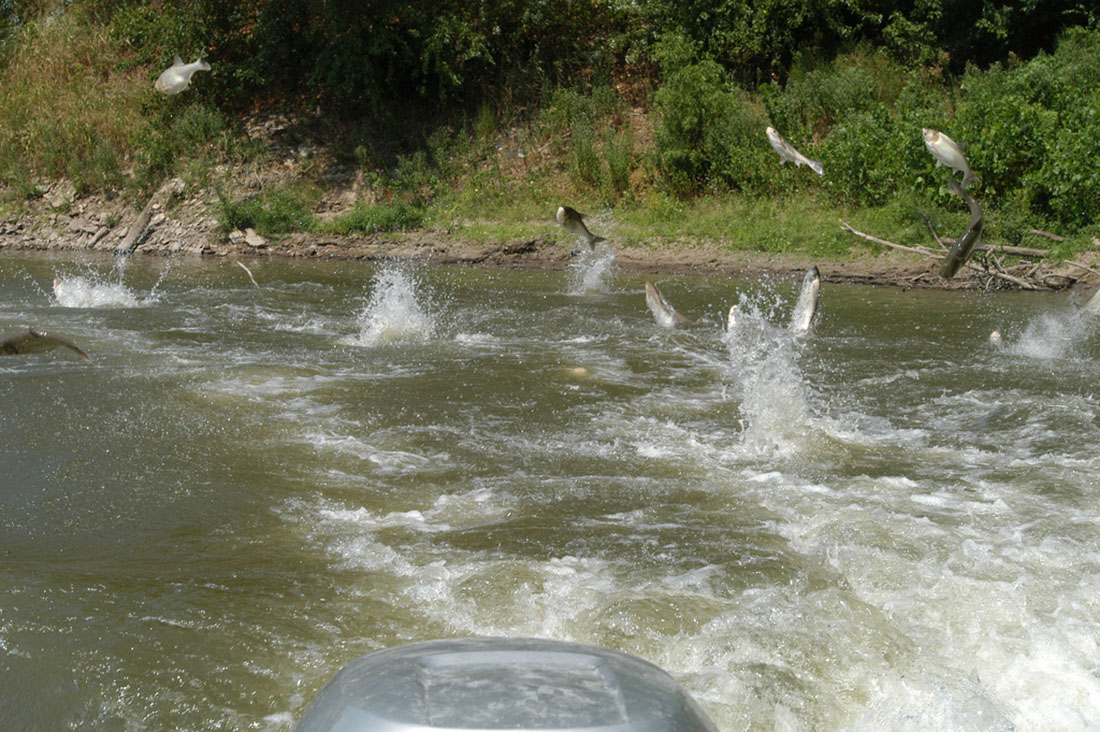By Danielle Prieur
Imagine trying to fish for trout in Lake Michigan or other Great Lakes, like your grandfather and father did before you.
Fishing is a summer pastime on the lakes.
“You’d have to wear armor,” said Marc Gaden, communications director and legislative liaison for the Great Lakes Fishery Commission in Ann Arbor, Mich.
He said this might be the only solution for fishermen if Asian carp get into the lakes.
Marc Gaden, communications director and legislative liaison for the Great Lakes Fishery Commission, said this might be the only solution for fishermen if Asian carp get into Lake Erie.
Case in point: Lake Erie.
Last month, University of Michigan ecologist Hongyan Zhang and her team published a report on Lake Erie in the journal Transactions of the American Fisheries Society that predicted what would happen if the carp eventually made their way to Lake Erie.According to the models Zhang created, the carp would eat native species, destroy their ecosystem and cause bodily harm to fisherman and damage to the fishermen’s boats.

Although Asian carp are currently not in Lake Michigan or any of the other Great Lakes, they are reported to be only 22 miles from an electrical barrier in the Chicago River designed to repel them, according to the U.S. Fish and Wildlife Commission. (Learn more about the barrier.)
If carp got through the barrier, they could easily reach Lake Michigan and then move on to Lake Erie according to Gaden.
Catfish farmers introduced Asian carp in the 1970s. Then, flooding enabled the fish to escape into the Mississippi Basin, from which they entered the Illinois and Missouri rivers.
The two most common species of Asian carp in the Mississippi Basin, Bighead carp and Silver carp, are eating machines. Bighead carp, the larger of the two, can grow up to 60 inches and weigh 110 pounds, according to the U.S. Fish and Wildlife Service’s publication, “Asian Carp –Aquatic Invasive Species Issues, Program Accomplishments and Program Needs.”
When Gaden jokingly referred to body armor for fishermen, he was commenting on the study’s Lake Erie models.
“There’s no outcome that anyone could think of that would be a good thing,” said Gaden. “Thirty-three percent of the biomass would be taken up by Asian carp. That’s really alarming.”
One in three fish swimming and, more importantly eating, alongside the native rainbow trout, bass, walleye and perch, would be an Asian carp.
“The [Zhang] study suggests that all species that people desire would be harmed quite significantly by Asian carp making up biomass,” said Gaden. “The price you pay for that is the loss of some of the species that are most valuable in Lake Erie.”
Edward Rutherford, a co-author of the Zhang study and a fish biologist with the National Oceanic and Atmospheric Administration, said the effects Asian carp would have on native species in Lake Erie would range on average “less than a 25 percent decrease,” but in some cases could be a much as a “36-37 percent decrease.”
This loss of native species and ecosystems would not only affect commercial fisherman, an “industry that is worth well over $1 billion to Canada and the United States,” but sports fisherman.
As there are still no Asian carp in Lake Erie yet, the best solution remains prevention, Rutherford and Gaden said.
“Our objective has always been and will always be to keep them out of the Great Lakes,” said Gaden.
So far, Chicago has been successful in keeping its Asian carp out of the Chicago River through the use of an electrical barrier, but some experts worry this may not always be the case. So far, only carp DNA has been found in this river.


